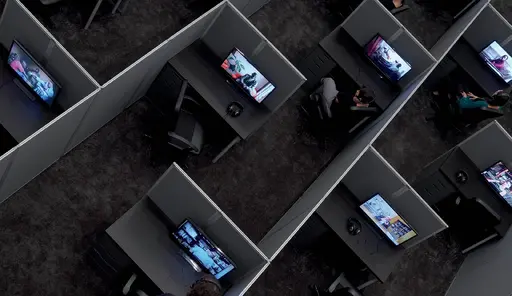Contemporary artists today, less than ever, rely exclusively on the classical training that once defined them in previous eras. Increasingly, artists equip themselves with bodies of research, knowledge of and collaboration with other disciplines, and the use of a wide range of media. This results in the creation of complex art works that often go beyond visual language alone and contain diverse disciplinary influences, perspectives, and ideas. Concurrently artists seem particularly drawn to philosophical or theoretical texts, which in turn inform their work. Instead of working within disciplinary boundaries, the field of contemporary art constantly redefines itself anew through complex “interdisciplinary” practices.
Given such practices, an elaboration of what the prefix “inter” implies for the relationship of art with other domains of knowledge or disciplines (such as architecture, history, science, or sociology) is an important point of discussion. Are exchanges between art and more “traditional” fields of knowledge characterized by symbiosis and creativity or enmity and mutual distrust? When artists work with experts or information from specific fields outside of the art realm, the resulting work of art may be seen as an “amateur” exploration of a subject, one that is less legitimate than the original material. On the other hand, artistic practice resists the rigid rules and strict methodologies that are fundamental to many other disciplines, producing a unique kind of knowledge and generating new insights that are often stymied by the rigidity and limits of academia—a phenomenon from which other disciplines might learn.
“Interdisciplinary” practices in contemporary art could suggest a mode of intervention into other disciplines that is based both on affinity and exclusivity. If art’s fluidity and undefined boundaries allow for acts of “indiscipline,” appropriation, deconstruction, and reconstruction of certain kinds of knowledge, it retains the potential to break through the dichotomy of practice and theory and develop new kinds of knowledge. Or do such methods remain as “appendices” to other disciplines, limited to a closed circuit of reception among an art world elite?
For more information on the parallel program in collaboration with NWO (Dutch Organisation for Scientific Research), please visit www.co-ops.nl.
Inter-discipline or Non-discipline? discusses various interpretations of the so-called interdisciplinary approach in contemporary art and its position within other disciplinary knowledge systems in terms of the connectivity, exclusiveness, or exchange between them.
Program
13.00 – 16.00 hrs
Parallel program in collaboration with NWO (Dutch Organisation for Scientific Research); for more information, please visit www.co-ops.nl.
14.00 hrs
Discussion group
16.00 hrs
Lectures by and discussion with:
Lonnie van Brummelen & Siebren de Haan, artists, Amsterdam
Mariana Castillo Deball, artist, Amsterdam, Berlin, Mexico City
Bruno Latour, philosopher, sociologist, curator, Paris
19.00 hrs
Break (with optional light meal)
20.00 hrs
Anne van der Zwaag, art historian, introduces and reads from a selection of artists’ books.
